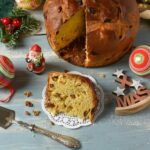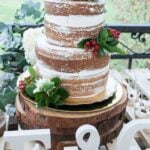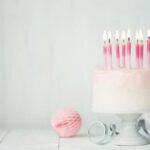Buttercream icing is a beloved staple in the world of cake decorating, known for its creamy texture and delicious taste. In this article, we will delve into the art of decorating cakes with buttercream icing, exploring essential tools, ingredients, and techniques to help you create stunning and delectable creations. Whether you’re a novice baker or a seasoned pro, mastering the art of buttercream decoration is sure to elevate your baking game.
One of the most popular questions among baking enthusiasts is how to decorate cakes with buttercream icing. The versatility of buttercream makes it an ideal choice for creating intricate designs, smooth finishes, and delightful decorations on cakes of all shapes and sizes. From simple swirls to elaborate floral patterns, the possibilities are endless when it comes to using buttercream as your medium for cake adornment.
Before diving into the hands-on decorating process, it’s important to understand the fundamentals of buttercream icing. From selecting the right tools and ingredients to preparing the perfect consistency of buttercream, every step plays a vital role in achieving professional-looking results. With our comprehensive guide on cake preparation, basic and advanced techniques, troubleshooting tips, and finishing touches, you’ll soon be on your way to creating beautiful buttercream masterpieces that are sure to impress.
Essential Tools and Ingredients
When it comes to decorating cakes with buttercream icing, having the right tools and ingredients is essential to ensure a successful outcome. The list of tools needed may vary depending on the specific design you have in mind, but there are some basic items that every baker should have on hand.
Some essential tools for working with buttercream icing include offset spatulas for spreading icing, piping bags and tips for creating intricate designs, a turntable for easy frosting application, and a cake scraper for achieving smooth finishes.
In addition to the right tools, it’s important to use quality ingredients when making buttercream icing. The main components of buttercream are butter, powdered sugar, vanilla extract, and a splash of milk or cream. Using unsalted butter allows you to control the salt content in the icing.
It’s also recommended to use pure vanilla extract for the best flavor. For coloring your buttercream icing, gel food coloring is preferred over liquid food coloring as it won’t alter the consistency of the icing.
To make your cake decorating experience more efficient and enjoyable, having these tools and ingredients readily available can help streamline the process. Investing in good quality tools will not only make decorating easier but will also elevate the overall look of your cakes. Remember that practice makes perfect when it comes to mastering how to decorate cakes with buttercream icing, so don’t be afraid to experiment with different techniques and designs until you find what works best for you.
Preparing the Buttercream
Buttercream icing is a popular choice for decorating cakes due to its versatility and delicious taste. When learning how to decorate cakes with buttercream icing, one of the essential steps is preparing the buttercream itself. By following a few simple steps, you can create the perfect buttercream icing to adorn your cakes with.
To make a basic buttercream icing, you will need ingredients like softened unsalted butter, powdered sugar, vanilla extract, and a pinch of salt. These ingredients come together to create a smooth and creamy buttercream that is ideal for decorating cakes. One key tip is to ensure that your butter is at room temperature to achieve the right consistency in your icing.
| Ingredients | Instructions |
|---|---|
| 1 cup unsalted butter (softened) | Cream butter in a mixing bowl until smooth |
| 4 cups powdered sugar | Add powdered sugar gradually and mix until light and fluffy |
| 1 tsp vanilla extract | Incorporate vanilla extract and a pinch of salt for flavor |
| Milk or cream (optional) | Add milk/cream as needed for desired consistency |
Cake Preparation
When it comes to decorating cakes with buttercream icing, one of the most crucial steps is properly preparing the cake layers. Ensuring that your cakes are well-prepared will not only make the decorating process easier but will also result in a more professional-looking final product.
To start, it’s essential to level your cake layers before stacking them. This can be done using a cake leveler or a long serrated knife. By leveling off the domed tops of the cakes, you will create a sturdy and stable base for your buttercream frosting. Additionally, trimming any uneven edges will help create clean and straight lines when layering your cakes.
Next, consider filling your cake layers with complementary flavors and textures. Whether it’s a decadent chocolate ganache, fresh fruit compote, or silky buttercream filling, adding layers of flavor between each cake layer can take your dessert to the next level. Just be sure to spread the fillings evenly and avoid overfilling to prevent bulging or instability in your final decorated cake.
Lastly, once your cake layers are leveled and filled, it’s important to chill them before applying buttercream icing. Chilling the cake layers for at least 30 minutes will help firm up the structure and make it easier to work with when decorating.
A chilled cake is less likely to crumble or tear while frosting, resulting in a smoother and neater finish. By following these tips for preparing your cake layers, you’ll be on your way to creating beautiful and delicious cakes decorated with buttercream icing in no time.
Basic Buttercream Techniques
Buttercream icing is a versatile and popular choice for decorating cakes due to its smooth texture and ability to hold intricate designs. Mastering basic buttercream techniques is essential for creating beautifully decorated cakes that are not only visually appealing but also delicious. In this section, we will explore some fundamental techniques such as crumb coating, piping, and smoothing buttercream on cakes.
One of the first steps in decorating a cake with buttercream icing is to apply a crumb coat. A crumb coat is a thin layer of icing that seals in any loose crumbs on the cake, ensuring that the final layer of buttercream goes on smoothly. To crumb coat a cake, simply spread a thin layer of icing over the entire surface using an offset spatula, then chill the cake in the refrigerator until the icing sets.
Piping with buttercream icing allows decorators to create intricate designs and patterns on cakes. To pipe with buttercream, fill a piping bag fitted with a piping tip of your choice with icing, then apply gentle pressure to pipe out desired decorations onto the cake. From borders to flowers to writing, piping opens up a world of creative possibilities when it comes to decorating cakes with buttercream icing.
| Technique | Description |
|---|---|
| Crumb Coating | A thin layer of frosting applied to seal in crumbs before decorating |
| Piping | Using a pastry bag fitted with tips to create various decorative elements like borders or designs |
Advanced Buttercream Techniques
Buttercream Flowers
Creating buttercream flowers is a popular and impressive technique that can elevate the look of any cake. To make buttercream flowers, you will need a piping bag fitted with a petal tip or flower tip. Begin by piping a small mound of buttercream in the center of the flower nail or directly onto the cake.
Then, pipe petals around the center in a circular motion, using gentle pressure on the piping bag to create delicate layers of petals. Practice different flower designs such as roses, daisies, and peonies to add variety and beauty to your cakes.
Rosettes
Rosettes are another stunning buttercream decoration that can instantly enhance the appearance of your cake. To create rosettes, use a star-shaped piping tip in your piping bag and hold it at a 90-degree angle to the cake surface. Start in the center of where you want the rosette to be and pipe in a tight circular motion while applying consistent pressure on the bag.
Continue swirling outward until you have created a full, beautiful rosette shape. Experiment with different colors and sizes of rosettes to add visual interest to your cakes.
Intricate Designs
For those looking to take their buttercream decorating skills to the next level, creating intricate designs is a rewarding challenge. From lace patterns and swirled textures to geometric shapes and monograms, there are endless possibilities for incorporating detailed designs into your cakes with buttercream icing.
Practice precision and patience when working on intricate designs, as they often require steady hands and attention to detail. With practice and creativity, you can master complex buttercream decorations that will leave a lasting impression on anyone who sees your beautifully decorated cakes.
Troubleshooting Tips
Buttercream Consistency
One common problem that many encounter when decorating cakes with buttercream icing is the consistency of the buttercream itself. If the buttercream is too stiff, it can be difficult to spread and smooth onto the cake. On the other hand, if the buttercream is too soft, it may not hold its shape when piping intricate designs. To achieve the perfect consistency, make sure to follow the recipe measurements accurately and adjust with additional powdered sugar or milk as needed.
Bulging Layers
Another issue that can arise when decorating cakes with buttercream icing is bulging layers. This occurs when the filling between cake layers pushes outwards, creating a visible bulge along the sides of the cake. To prevent this from happening, make sure to properly level and stack your cake layers before applying buttercream. Additionally, refrigerating the cake after filling but before icing can help set the layers in place and reduce bulging.
Air Bubbles in Buttercream
Air bubbles trapped in your buttercream can lead to an uneven finish when decorating your cake. To avoid this problem, make sure to properly mix your buttercream to remove any air pockets before using it for decoration.
You can also gently tap and smooth out any air bubbles with a spatula or bench scraper while applying and smoothing the buttercream onto the cake. Taking your time and paying attention to detail will help create a flawless finish on your decorated cake.
By addressing these common issues and utilizing helpful tips and tricks for troubleshooting, you can ensure a successful experience when decorating cakes with buttercream icing. Remember that practice makes perfect, so don’t get discouraged if things don’t go perfectly on your first attempt. With patience and creativity, you’ll soon be able to master the art of decorating cakes with buttercream icing like a pro.
Finishing Touches
Adding final touches to a buttercream decorated cake can truly elevate its appearance and make it stand out. With the right decorations, you can turn a simple cake into a stunning work of art that will impress your guests. Here are some ideas on how to add those finishing touches to your buttercream masterpiece:
- Sprinkles: Sprinkles are a fun and easy way to add color and texture to your cake. Whether you choose classic rainbow sprinkles, metallic dragees, or themed shapes like stars or hearts, sprinkles can instantly make your cake look more festive.
- Edible Glitter: Edible glitter adds a touch of sparkle and glamour to any cake. You can find edible glitter in various colors and sizes to match the theme of your cake. Simply sprinkle the glitter over the buttercream for a magical finishing touch.
- Decorations: From fresh flowers to chocolate shards, there are countless decorations you can use to enhance the appearance of your buttercream cake. Consider adding macarons, fruit slices, or even mini fondant figures for a personalized touch.
When adding final touches to your buttercream decorated cake, remember to consider the overall theme and color scheme you want to achieve. Whether you opt for a minimalist look with subtle accents or go all out with vibrant decorations, let your creativity shine through in every detail. Experiment with different combinations of sprinkles, edible glitter, and decorations until you find the perfect finishing touches for your buttercream masterpiece.
Don’t be afraid to mix and match different elements to create a unique design that reflects your personality or the occasion you’re celebrating. Remember that decorating cakes with buttercream icing is not just about taste but also about presentation – so have fun with it and let your imagination run wild.
Conclusion
In conclusion, mastering how to decorate cakes with buttercream icing opens up a world of creative possibilities for anyone with a sweet tooth and a passion for baking. The journey from understanding the versatility of buttercream icing to exploring advanced decorating techniques can be incredibly rewarding and satisfying. By following the detailed steps outlined in this guide, you have equipped yourself with the knowledge and skills needed to elevate your cake decorating game.
As you embark on your buttercream cake decorating endeavors, remember that practice makes perfect. Don’t be discouraged by any initial challenges you may face – instead, use them as learning opportunities to improve your skills. Experiment with different piping tips, colors, and designs to unleash your creativity and create unique masterpieces that are sure to impress family and friends.
So go ahead, gather your essential tools and ingredients, prepare the perfect buttercream icing, and let your imagination run wild. Whether you’re creating a simple birthday cake or a stunning wedding centerpiece, decorating cakes with buttercream icing is a delightful art form that allows you to express yourself through delicious confections. Enjoy the process, savor the results, and most importantly – have fun indulging in the wonderful world of buttercream cake decorating.
Frequently Asked Questions
How to Decorate With Buttercream Frosting?
Decorating with buttercream frosting involves using piping bags and different tips to create various designs on cakes, cupcakes, or cookies. You can pipe borders, flowers, swirls, rosettes, and other decorative elements by applying gentle pressure to the bag while moving it in your desired pattern. Buttercream is versatile and forgiving, making it a popular choice for home bakers.
How Do You Put Buttercream on Top of a Cake?
Putting buttercream on top of a cake involves first ensuring that the cake layers are leveled and cooled. Then, apply a thin layer of buttercream (crumb coat) to seal in any crumbs before adding a thicker layer for the final finish.
Use an offset spatula to spread the buttercream evenly across the top of the cake before proceeding to frost the sides.
How Do You Ice a Cake With Buttercream Icing?
Icing a cake with buttercream icing requires starting with a crumb coat to seal in any loose crumbs and create a smooth surface for the final layer of icing. Apply a generous amount of buttercream to the top of the cake and use an offset spatula to spread it evenly over the entire surface.
Repeat this process for each additional layer if you are making a layered cake, ensuring that each layer is level and properly chilled before icing. The key is to work quickly yet carefully to achieve a clean and polished finish on your cake.

Welcome to my blog about home and family. This blog is a place where I will share my thoughts, ideas, and experiences related to these important topics. I am a stay-at-home mom with two young children. I hope you enjoy reading it! and may find some helpful tips and ideas that will make your home and family life even better!





